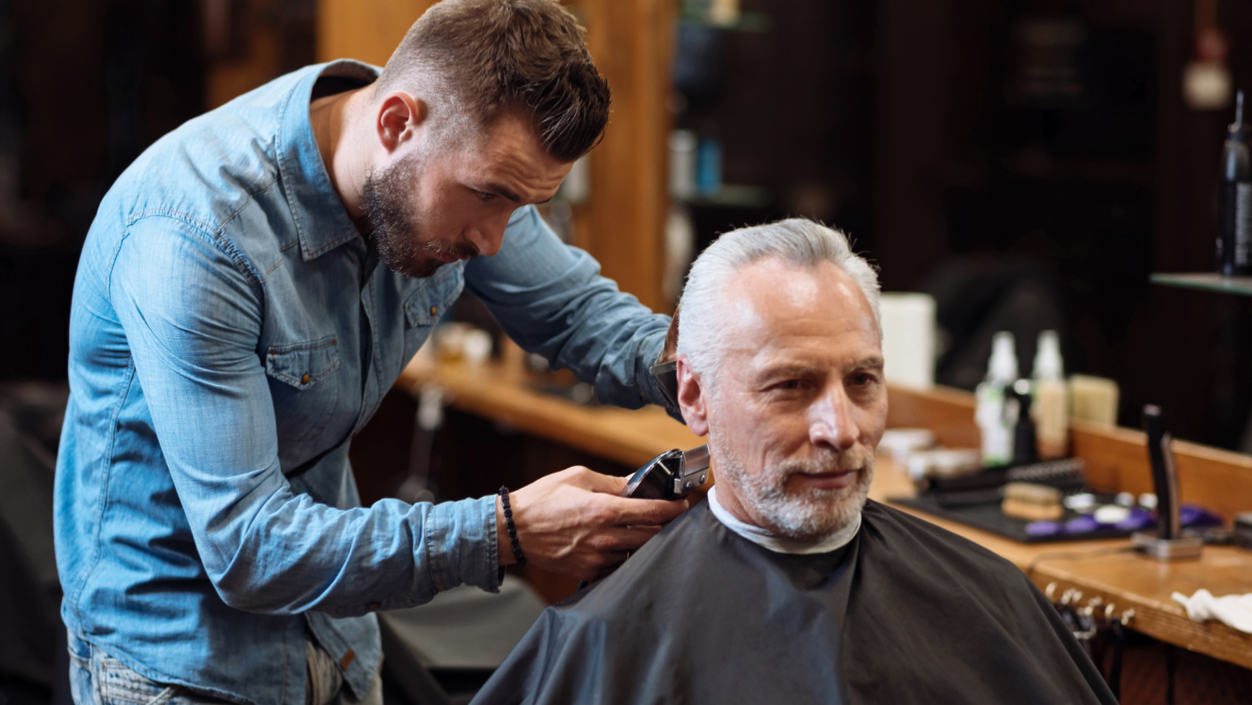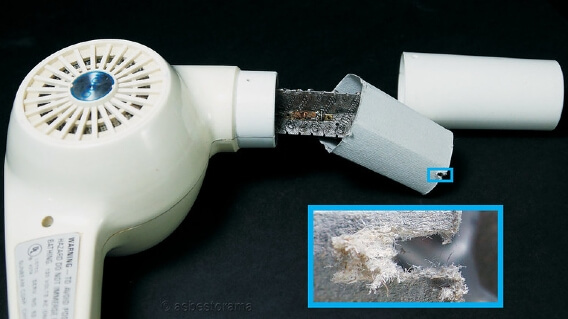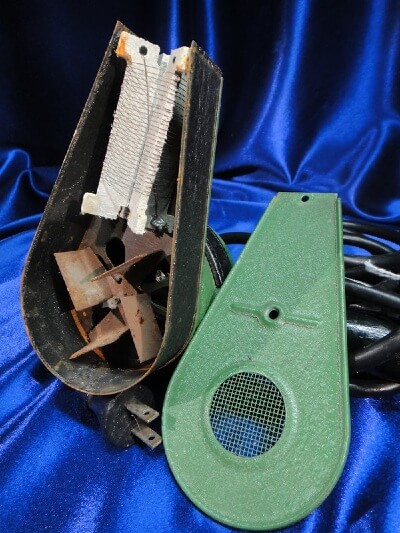Hairdressers and Asbestos Exposure
Hair dryers used by hairdressers often contained asbestos, which was used to insulate the appliance through the late 1970s. Hair dryers containing asbestos, including hand-held and hood varieties, made up 90% of annual U.S. hair dryer sales. Hairdressers were also exposed to asbestos-contaminated talc.

How Are Hairdressers Exposed to Asbestos?
Few people would ever associate hairdressing with occupational asbestos exposure. In the past, these workers handled hair dryers that contained asbestos insulation. Barbers and hairdressers were also exposed to asbestos-contaminated talcum powder. Repeated use of these products increased their risk of developing asbestos-related diseases.
By 1980, hair dryer manufacturers voluntarily stopped making dryers with asbestos insulation. Now that manufacturers using asbestos in products no longer produce asbestos-insulated dryers, today’s hairdressers have a much lower occupational exposure risk. Hairdressers should be cautious of older equipment that is still in use. One 2006 survey found that approximately 25% of hood-style hairdryers in U.K. salons were older models that contained asbestos. Many of the manufacturers that supply U.K. salons also supply U.S. salons, so the risk could be comparable among older salons in the United States.
While hair dryers are no longer made with asbestos, recent tests show asbestos continues to contaminate certain brands of talcum powder.
Lombardy Mesothelioma Center Occupational Risk Research
Researchers at the Lombardy Mesothelioma Registry in Italy tracked 2,989 mesothelioma cases from 2000 to 2009 and found 30 cases in hairdressers.
The researchers found occupational asbestos exposure in hairdressers is:
- Likely if the hairdresser worked with a dryer model that was known to contain asbestos
- Possible if they worked with unidentified dryers at least one year before asbestos was banned
- Unknown if they were a hairdresser for less than a year or worked primarily as a “head-washer”
“Hairdryers are possible sources of asbestos exposure in patients with mesothelioma, and the asbestos exposure risk is higher for those who use hairdryers occupationally,” the study concluded.
Asbestos Products Associated with Hairdressers

Some of the tools that hairdressers worked with daily – hand-held hair dryers and hood-style hair dryers – once contained dangerous levels of asbestos. As with most other asbestos-containing products, the hair dryers contained asbestos to protect the internal parts from overheating and catching fire. Barbers and hairdressers were also exposed to asbestos-contaminated talcum powder.
Hairdressers were exposed to the following asbestos-contaminated products:
- Asbestos-Contaminated Talcum Powder
Barbers and hairdressers use talcum powder to absorb moisture, calm irritations and easily brush cut hairs from the back of the neck. Some brands of talcum powder have been found to be contaminated with asbestos, including Johnson’s Baby Powder and Clubman brand talcum powder.

- Hand-Held Hair Dryers
It is estimated that at one point, up to five million asbestos-containing hand-held dryers were in circulation. These dryers came from several different manufacturers, including Conair and Remington, and they made up approximately 90% of all annual domestic hair dryer sales.
In 1979, when the U.S. Consumer Product Safety Commission found that dryers from 11 major brands contained dangerous amounts of asbestos, each of the manufacturers issued a voluntary refund and return policy for the contaminated equipment. They all then discontinued production of asbestos-insulated dryers.
- Hood-Style Hair Dryers
Hood-style (or bonnet-style) dryers from brands such as La Reine and Suter Avante also contained asbestos. Most hood hair dryers contained a simple layer of asbestos insulation along the internal heating element. In some brands, however, there was also a string of pure chrysotile asbestos that supported the heating element.
Manufacturers Who Made Products Hairdressers Used
Well-known brands, including Conair and Johnson & Johnson, have manufactured asbestos-contaminated hair dryers or talcum powder used by barbers and hairdressers.
The following manufacturers produced asbestos-containing hair dryers:
- Conair
- General Electric
- Gillette
- Indola
- J.C. Penney
- Korvettes
- La Reine
- Montgomery Ward
- North American Philips Corp. (Norelco)
- Remington
- Salon Nelson
- Schick
- Schwarzkopf
- Scovill
- Hamilton Beach/Dominion
- Regal
- Sears
- Sunbeam
- Suter Avante
- Wella
Certain manufacturers, including La Reine, Suter Avante and Regal, made asbestos-containing hooded dryers.
Products containing asbestos-contaminated talcum powder included:
- Bauer & Black Baby Talc
- Cashmere Bouquet Body Talc
- Chanel No. 5 After Bath Powder
- Coty Airspun Face Powder
- Desert Flower Dusting Powder
- English Leather After Shave Talc
- Faberge Brut Talc
- Friendship Garden Talcum Powder
- Johnson’s Baby Powder
- Johnson & Johnson’s Shower to Shower products
- Kings Men After Shave Talc
- Mennen Shave Talc
- Old Spice After Shave Talcum
- Pinaud Clubman Talc Powder
- Rosemary Talc
- Yardley Invisible Talc
- Yardley Black Label Baby Powder
- ZBT Baby Powder
Hairdressers and Mesothelioma
Several studies have found an increase in cancers (including but not limited to mesothelioma) among hairdressers, yet others failed to find a significant association. More studies have focused on the actual asbestos exposure hazards that hairdressers faced – or still face.
- A 2015 case report published in the International Journal of Occupational Health described a case of peritoneal mesothelioma in a cosmetologist who used asbestos-containing hair dryers daily for work from the mid-1970s to the mid-1980s.
- In 2009, in a scientific review of more than 240 studies, researchers found a 30% increase in lung cancer among hairdressers.
- One research project, published in 2006, looked at the asbestos emissions that occurred during an hour of hooded hair dryer operation. Researchers found small, yet statistically insignificant asbestos emission counts below the control limit of 0.3 f/ml. They warned that they tested dryers in good condition but that older hair dryers with more friable asbestos may pose a higher exposure threat. They also encouraged salon owners to implement adequate safety measures when using dryers.
Mesothelioma is almost exclusively caused by exposure to asbestos. Asbestos exposure also causes lung cancer, laryngeal cancer, ovarian cancer and asbestosis. According to a 2022 report by the European Commission, over 70,000 workers died in 2019 from past exposure to asbestos.
If you worked as a hairdresser and develop pulmonary or digestive problems, tell your doctor about your asbestos exposure risk and request a cancer screening. Diagnosing these conditions early improves treatment outcomes. It’s also important to seek medical care from a doctor specializing in mesothelioma so you can access the latest treatments and clinical trials.

Get help finding a top attorney who can get you the compensation you deserve.
Get Help NowLegal Options for Hairdressers Exposed to Asbestos
Hair dryer manufacturers, including Conair and Korvette, have been named in asbestos lawsuits. And makers of talcum powder, including Johnson & Johnson, have been sued by barbers and hairdressers.
- In July 2020, a New York judge allowed a mesothelioma talc lawsuit involving a barber to proceed after defendant Whittaker, Clark and Daniels requested to be released from the suit. After Vincent Luca died of mesothelioma, his surviving family members filed a wrongful death lawsuit against the talc supplier claiming its asbestos-contaminated talc caused Luca to develop the cancer. The outcome of the case is not published.
- One California hairdresser, Genevieve Gunderson, filed an asbestos lawsuit in the early 2000s. The hairdresser also experienced secondhand exposure when she washed her husband’s asbestos-contaminated clothing. The San Francisco jury who heard her case awarded her $11.5 million in 2002 for lost income, medical expenses and pain and suffering.
- Another lawsuit involved the wife of a hairdresser and truck driver. The woman, Ardyce Riggs, was a customer service worker and housewife who attributed her disease to secondhand exposure from her hairdresser husband. Riggs filed her suit in March 2012 and the outcome is unknown.
If you’ve been diagnosed with mesothelioma, it is important to find a mesothelioma lawyer to review your case and advise whether you qualify to file multiple legal claims with asbestos trust funds, in addition to a lawsuit.
If you’ve lost a loved one to mesothelioma, you are eligible to file a wrongful death lawsuit seeking compensation to cover medical expenses, lost wages and funeral costs.
Recommended Reading


